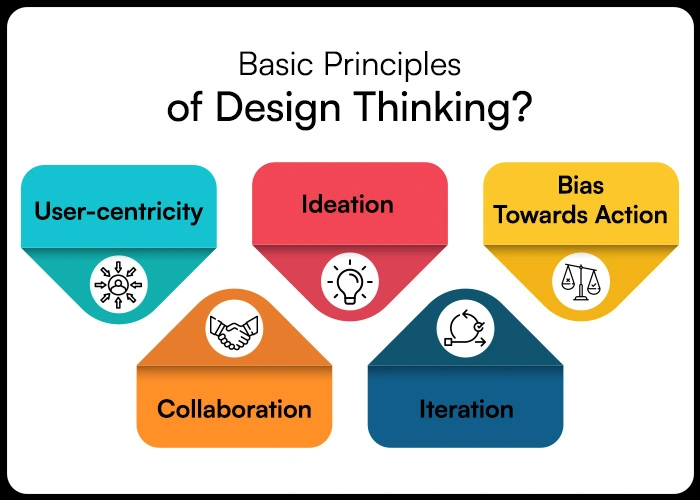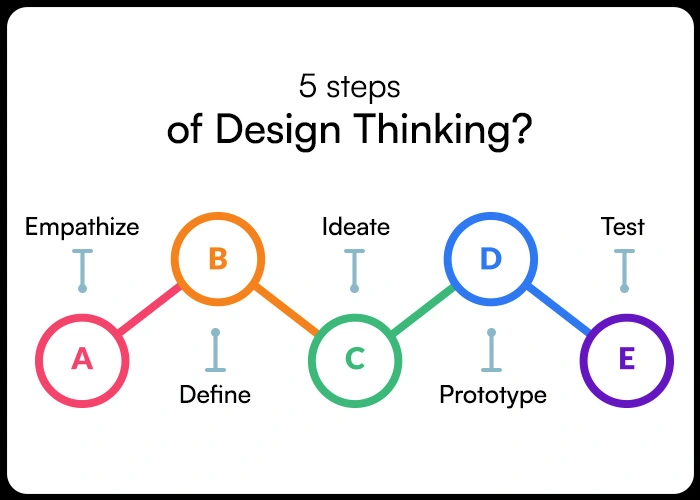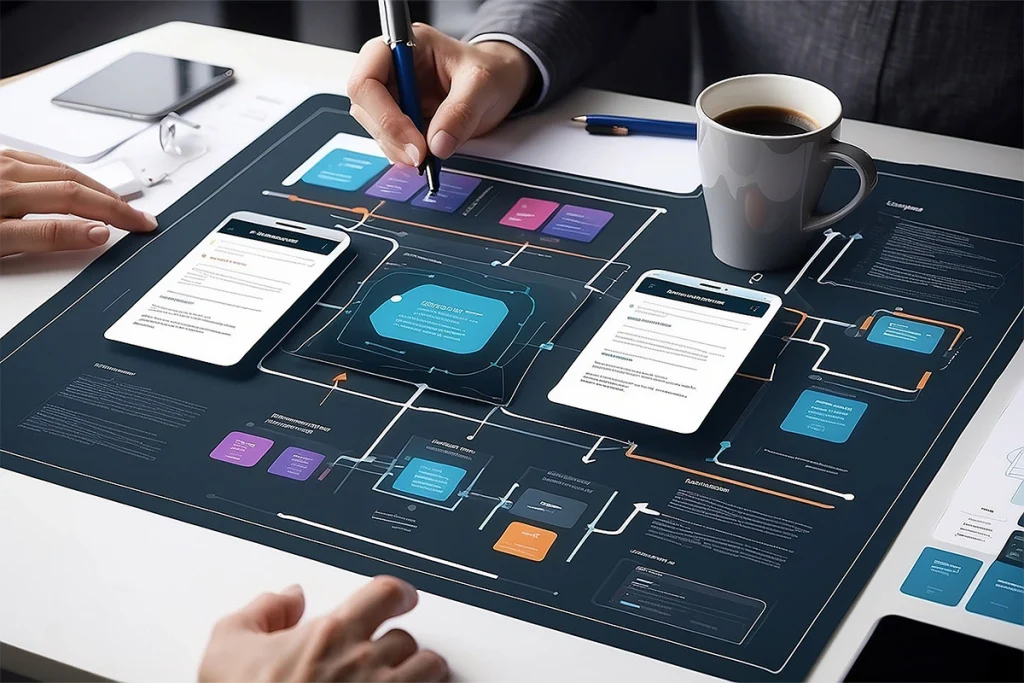Design thinking is a creative problem-solving approach that emphasizes empathy, collaboration, and experimentation to create innovative solutions. In today’s digitally advanced world, digital design marketing has grown in popularity due to its effectiveness in addressing complex challenges across multiple industries.
Anyway, in the guide “Unlocking the Steps from Concept to Creation: A Comprehensive Look into the Design Thinking Process,” we will give you the tools and knowledge you need to navigate this iterative approach, foster innovation, and craft extraordinary solutions. So let’s see what design thinking process is, graphic design trends in 2024, and how they can benefit your organization.
What is the Design Thinking process?
The term design thinking refers to a human-cantered problem-solving approach that focuses on understanding the people you are designing for. It’s a cyclical process that involves gathering user insights, brainstorming, building prototypes, and testing them with real people. According to our research, 79% of companies believe that design thinking improves the ideation process and has led to a significant change in their work culture.
What are the basic principles of Design Thinking?

Design thinking is based on a set of core principles that guide the problem-solving process. Here are some basics;
• User-centricity
Empathy for the user is a fundamental principle of design thinking. Designers put themselves in their shoes to better understand the needs, desires and frustrations of users.
• Collaboration
Great ideas often emerge from different perspectives; it is a teamwork. Design thinking thrives on collaboration, where people from different backgrounds come together to create solutions for digital product development.
• Ideation
Just don’t be afraid of brainstorming; this process encourages the generation of a wide range of ideas, including those that may seem strange, in order to explore all the possibilities.
• Iteration
Design thinking is a highly iterative and experimental process. Prototypes are created to test ideas before modifying them based on user feedback. This iterative approach ensures continuous improvement.
• Bias towards Action
It is a fact that design thinking is not just about brainstorming; It’s about turning those ideas into reality through prototyping and experimentation.
What are the 5 Steps of Design Thinking?

Although design thinking is an iterative and user-centred process, the journey is typically guided by five key steps, which are;
1. Empathize
This is the first step in the structured design process, requiring a thorough understanding of the target audience and their unique perspective to identify and solve the problem. Here, you will conduct user research using interviews, observations, and surveys to learn about users’ needs, challenges, and behaviors.
In a clear study, we inform you that the primary objective of the Empathize phase is to gain the most comprehensive understanding of your users and their needs and problems. It underpins the development of the product design and development or service you intend to create.
2. Define
Here, you will combine the findings from the empathy phase to create a clear problem statement. This statement should accurately reflect the key user you want to address. Moreover, this define phase will help the design team gather the best ideas for establishing features, functions, and other elements.
3. Ideate
With clearly defined issues, it’s time to unleash creativity. This phase focuses on a broad range of potential solutions. Mind mapping and brainstorming techniques can help generate many ideas, including unconventional ones. With the help of all this, you and your team members can look at the problem from different angles and come up with innovative solutions to your problem statement.
A variety of ideation techniques are available as needed, including Brainstorm, Brainwrite, Worst Possible Idea, and Scamper.
4. Prototype
Don’t get caught up in theory. Depending on the stage of digital product development, you will create low-fidelity or high-fidelity prototypes. These prototypes can range from sketches to basic models, allowing you to see your ideas in concrete form. We can think of this as a phase of experimentation, the goal of which is to find the best solution for each of the problems identified in the previous phases. Also, by the end of this phase, the design team has a better understanding of the challenges it faces and the product’s limitations and dilemmas.
5. Test
The final stage of design thinking is getting your prototypes into the hands of real users. Monitor how they interact with them, solicit feedback, visual design elements, AI and data management and identify areas for improvement. This iterative testing phase allows you to refine your solution until it effectively meets user needs.
Note: It is important to keep in mind that these stages are not always consecutive. You can return to previous steps as new information becomes available, or you can perform multiple iterations of testing and prototyping. The beauty and essence of design thinking stems from its emphasis on adaptability and continuous learning and improvement.
Why is Design Thinking important?
Design thinking encourages a customer-centric approach to problem solving, resulting in more innovative and user-friendly solutions. It is very important in this fast paced world because it fundamentally changes traditional problem-solving methods. While prioritizing user empathy and understanding their needs encourages the development of truly meaningful and effective solutions. This human-cantered approach saves time and resources, reducing the risk of creating products that exceed expectations while encouraging innovation that thrives in today’s dynamic world.
What is the main goal of design thinking?
Design thinking aims at three levels of success: desirability, feasibility, and functionality. The primary goal is to create solutions that users genuinely want and value. But it isn’t enough. Design thinking ensures that these solutions can be realistically built with available resources (where possible), make good business sense, and provide a long-term path of glory. By taking these dimensions into account, however, design thinking hopes to bridge the gap between creativity and practicality, custom software development, promoting solutions that are not only innovative but successful in the real world.
Conclusion
Finally, navigating the design thinking process can have a transformative impact on individuals and organizations. By embracing empathy, collaboration, and experimentation, teams can unleash their creative potential and create truly transformative solutions.
So, the next time you’re faced with a difficult issue or error, consider using design thinking principles to guide you from concept to creation. Let your innovative ideas grow and make a difference in the world.




